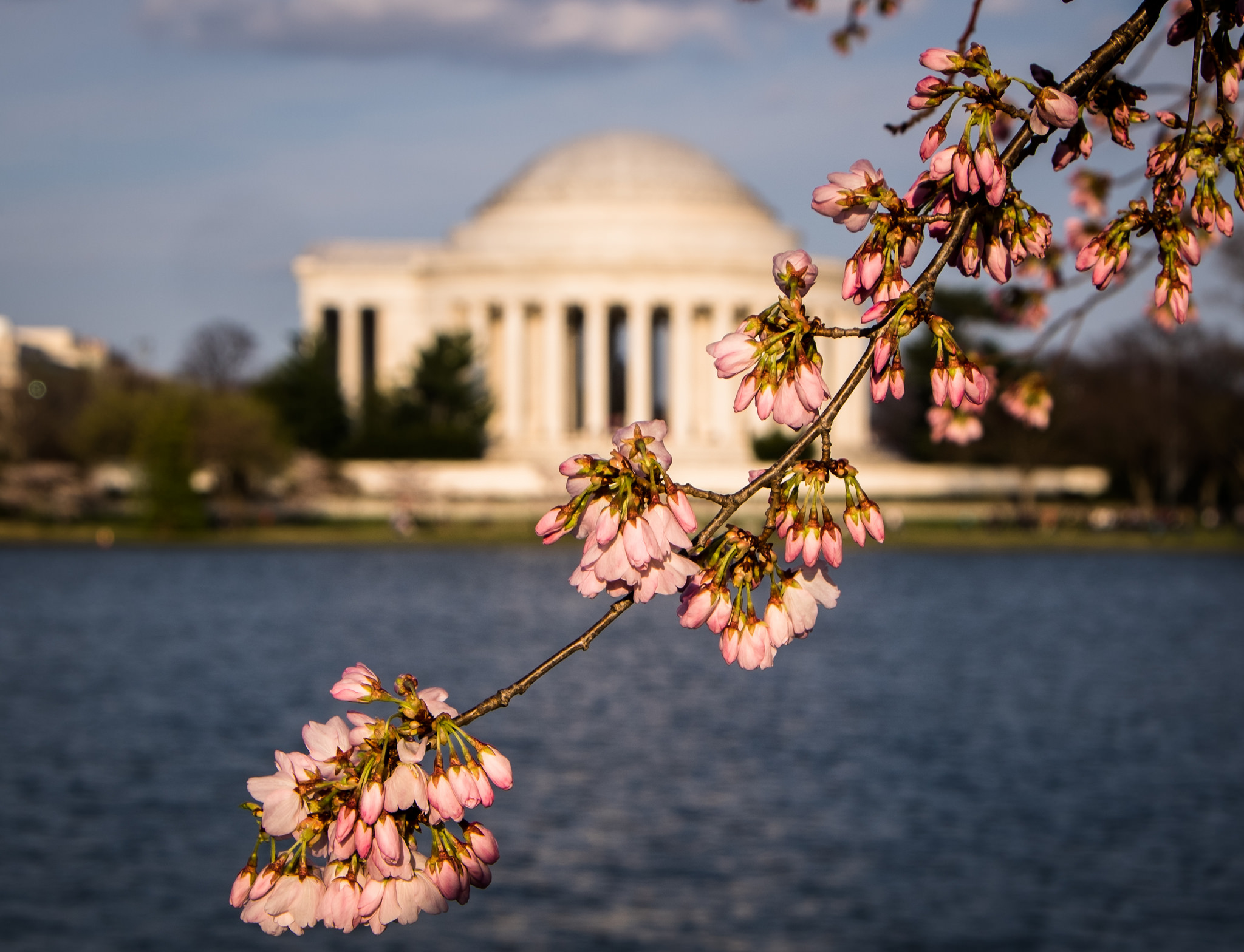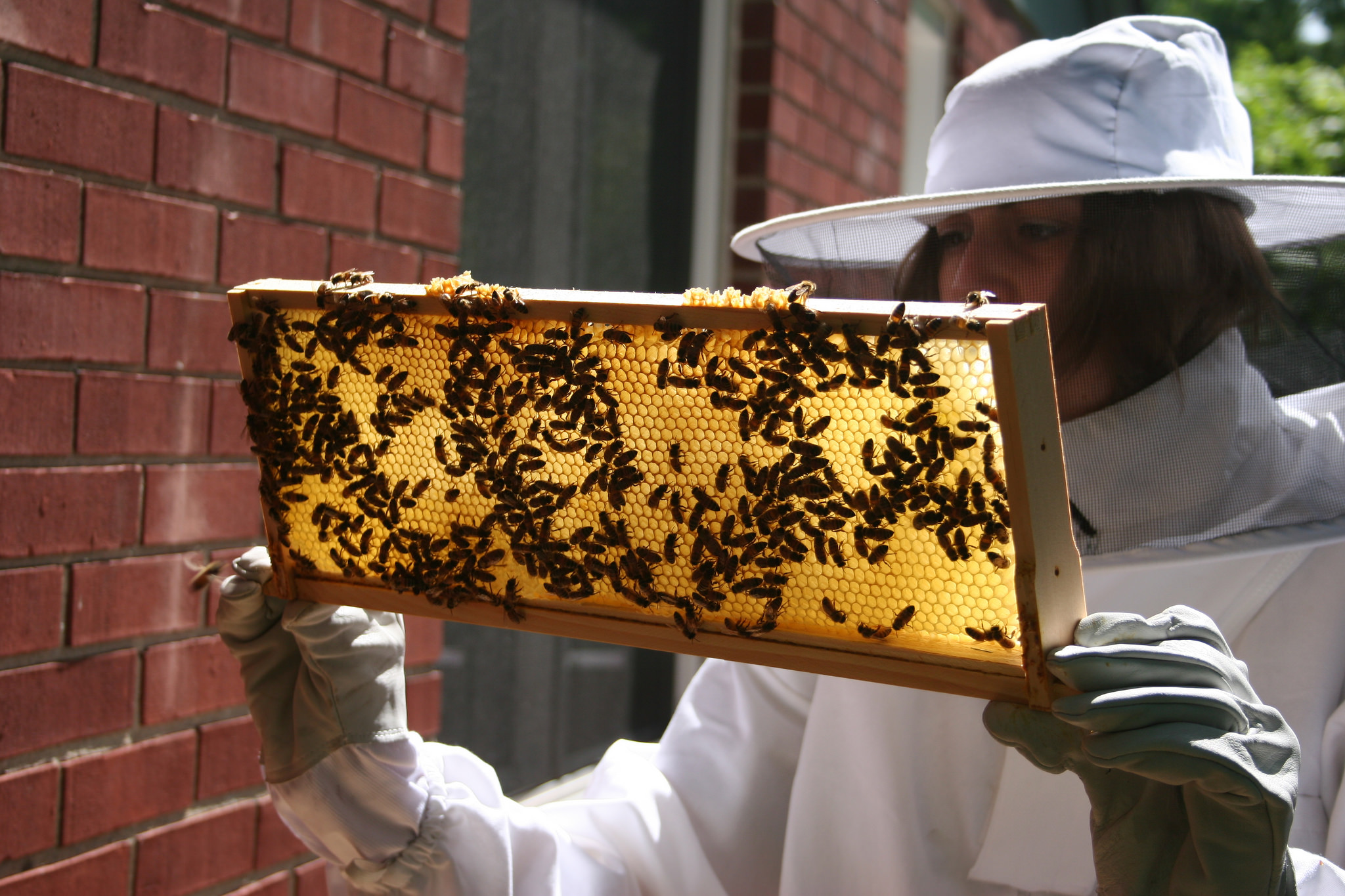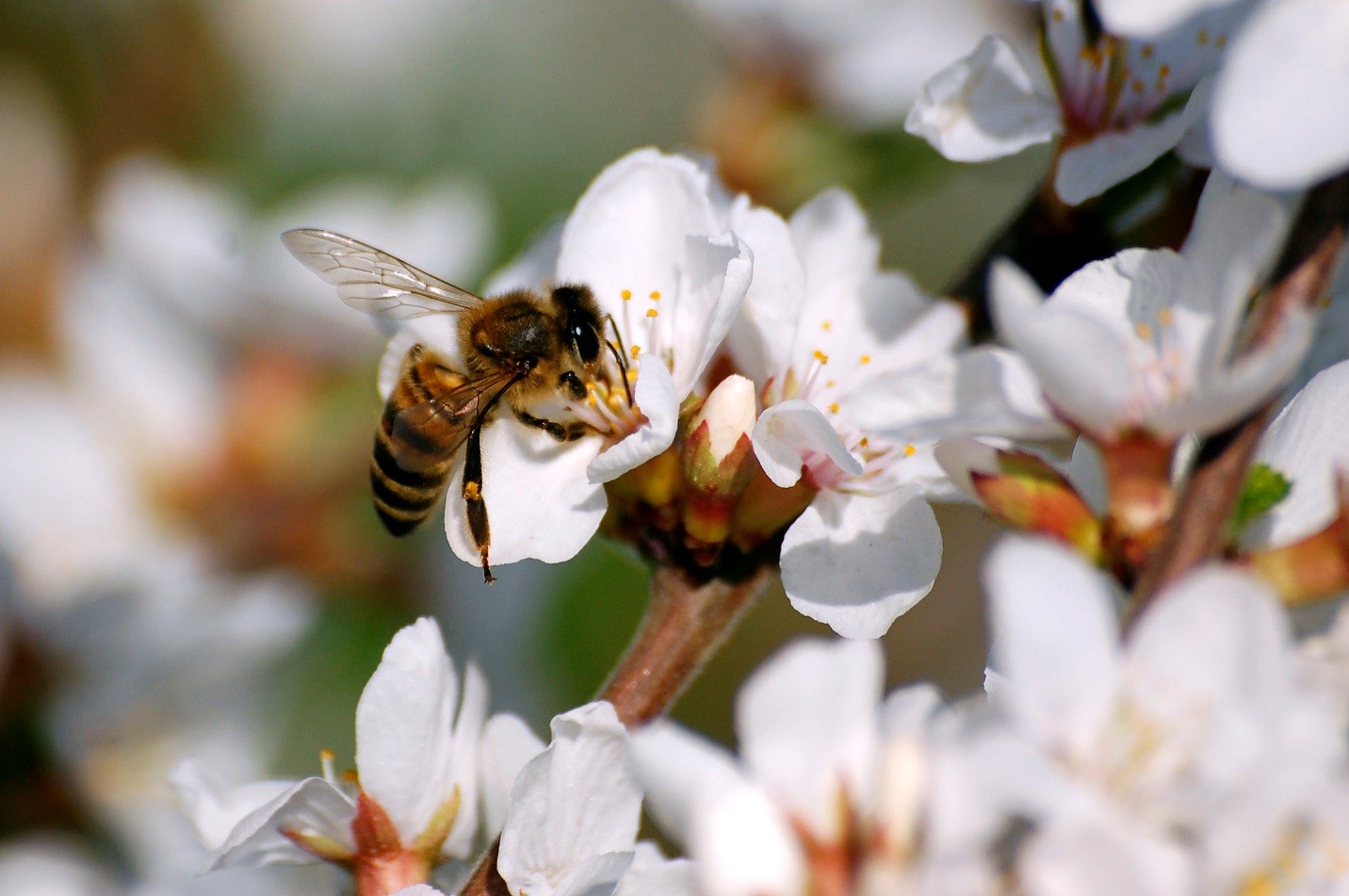By Shandra Furtado, Communications Intern
The annual cherry blossoms attract a very important group of visitors to the D.C. area each spring. No, these guests are not foreign diplomats or government officials, but instead a group that has more control of global food production than most: the local honeybee.
These little guys have no remorse when it comes to invading personal space, stealing stealthy sips of smoothies and scaring children. Although many see them as a nuisance, they are far from that. Bees play an integral role in the bloom of our beloved cherry blossoms and are vital for urban ecosystems to thrive.
When a bee collects nectar from a flower, pollen on the stamen — the male reproductive part of the flower — sticks to tiny hairs on the bee’s body. When the bee visits another flower, that pollen is rubbed off on the female reproductive organ of the flower, the stigma. From this process fertilization is possible, and seeds and fruits can develop from the flower.
Although the cherry blossoms do not produce fruits, bees are still an important factor in their pollination. Bees also help to pollinate local gardens and plants, contributing to the flowers and greenery we enjoy in city parks and squares during the warmer months.
Since beekeeping in D.C. has been legalized, the influx of new local beekeeping groups has been incredibly beneficial to the local environment.
Bee hives can be found at several government agencies as well as in rooftop gardens in Georgetown and at The George Washington University.
The growing bee population in D.C. is a step forward after years of bees suffering from Colony Collapse Disorder (CCD), a phenomenon that wipes out entire bee colonies for unknown reasons. CCD occurs when the worker bees in a colony disappear and leave behind only the queen, and usually honey and immature bees are still present, according to the USDA.
It’s speculated that pesticides play a large role in CCD, especially those containing neonicotinoids, according to the Xerces Society for Invertebrate Conservation. Neonicotinoids are especially dangerous to bees because they can be absorbed into plant tissue, making them present in pollen and nectar. Chronic exposure to these chemicals can harm bees’ natural foraging behavior and increases worker bee mortality.
A study done in England last year found there to be a higher bee diversity in urban and suburban areas. Another study done in 2007 actually found that bee populations in New Jersey were higher in urban areas than in natural forests, suggesting that mild anthropogenic disturbance can benefit many bee species.
With the right planning, bees and humans can sustain a mutually beneficial relationship in urban areas. Noah Wilson-Rich, founder of Best Bees Company, said in a TEDxBoston talk that urban bees actually have a higher winter survival rate than their rural counterparts.
According to Wilson-Rich, not only do bees survive better in cities, but on average produce a larger amount of honey. “ are going to all of the local community gardens and making delicious, healthy honey that just taste like the flowers in our city,” he said.
There are many possible reasons bees thrive in city environments. There may be fewer pesticides in urban environments, cities are warmer during the winter and human gardening activities bring a wider array of flower species into the area for bees to collect nectar from.
The biggest problem bees’ face in an urban environment — and possibly the easiest to fix — is social aversion from their human neighbors. Bees have a nasty reputation of being dangerous and scary, which is the reason urban beekeeping has been banned for so long in many cities. But, bees are not naturally aggressive creatures and only will sting if provoked.
This is the year to change our attitudes to embrace and welcome the company of the bee community at the tidal basin. If we’re lucky, our VIP guests may just leave us with a delicious cherry blossom-honey parting gift.


